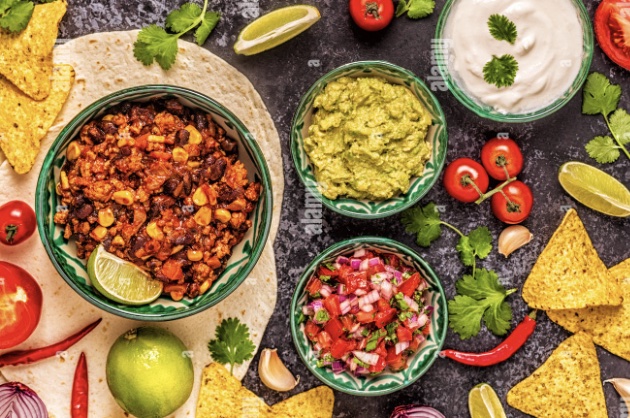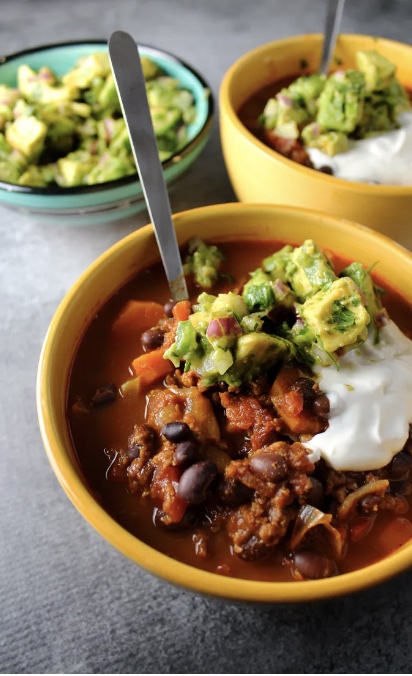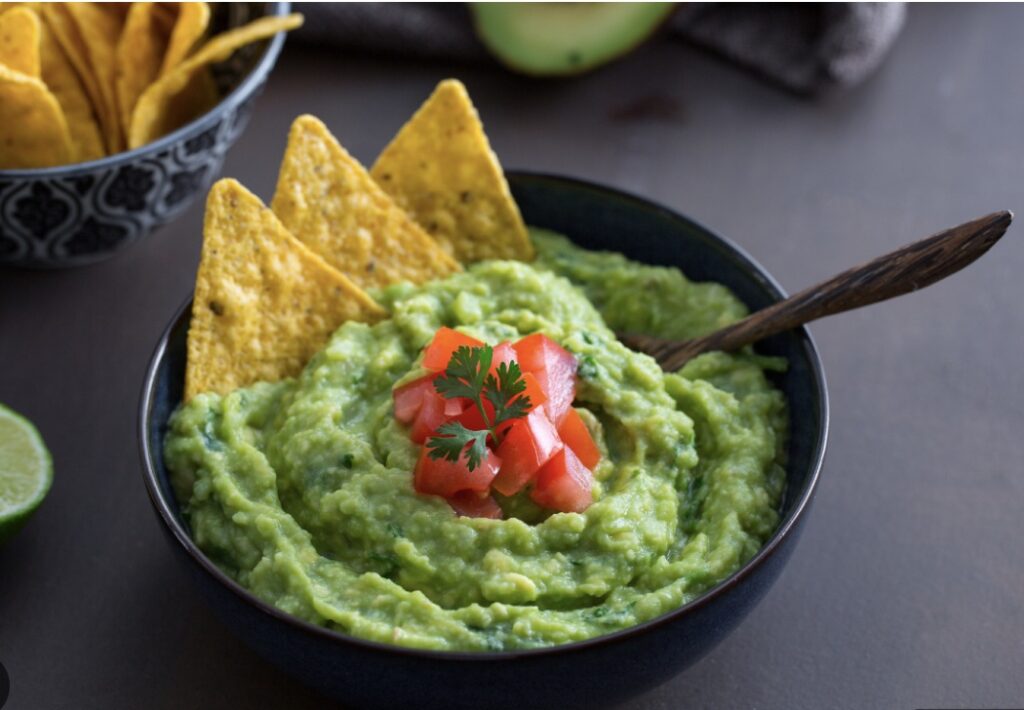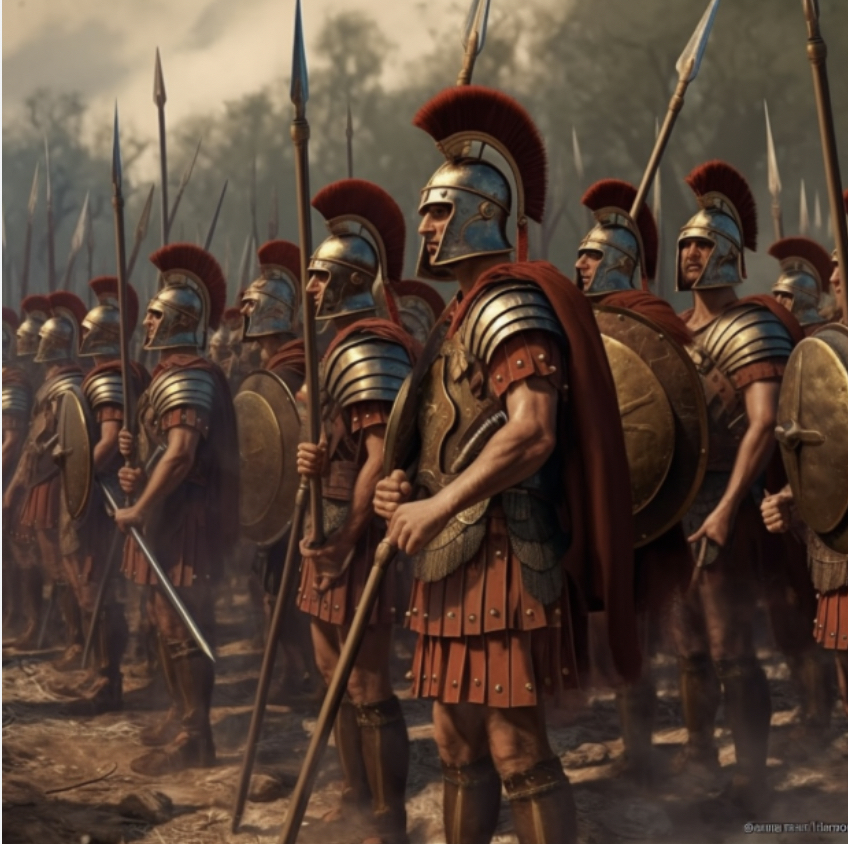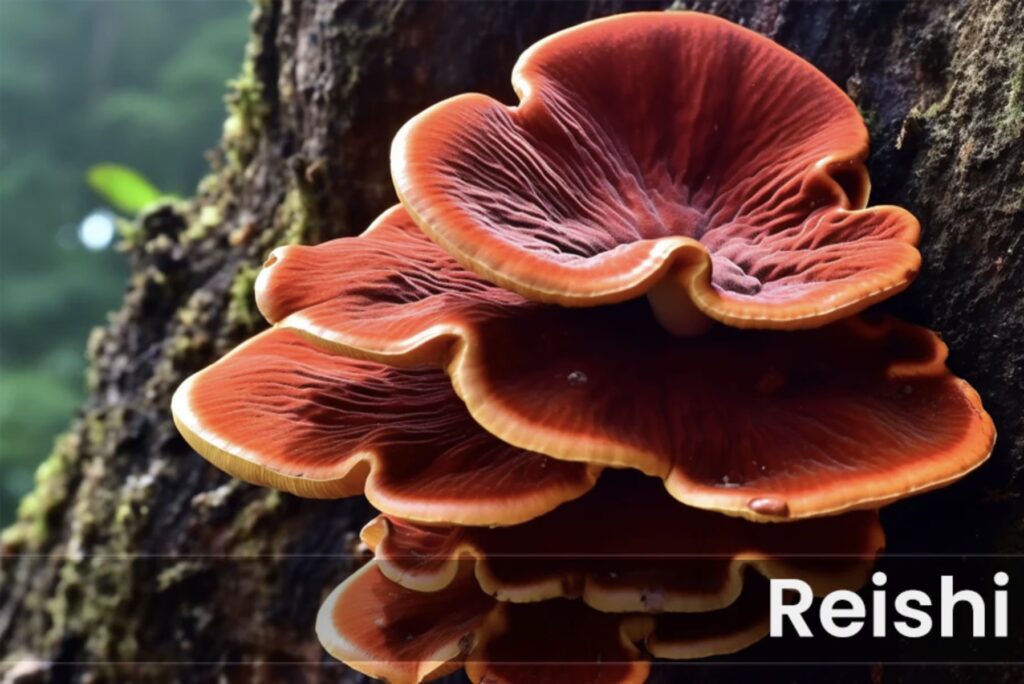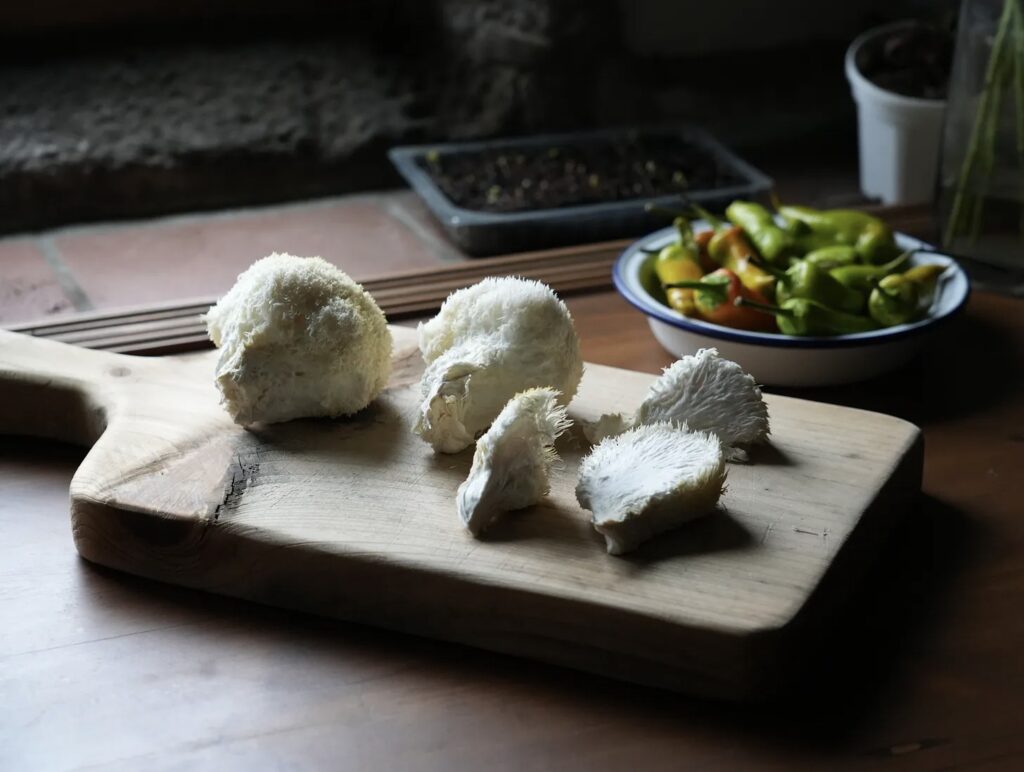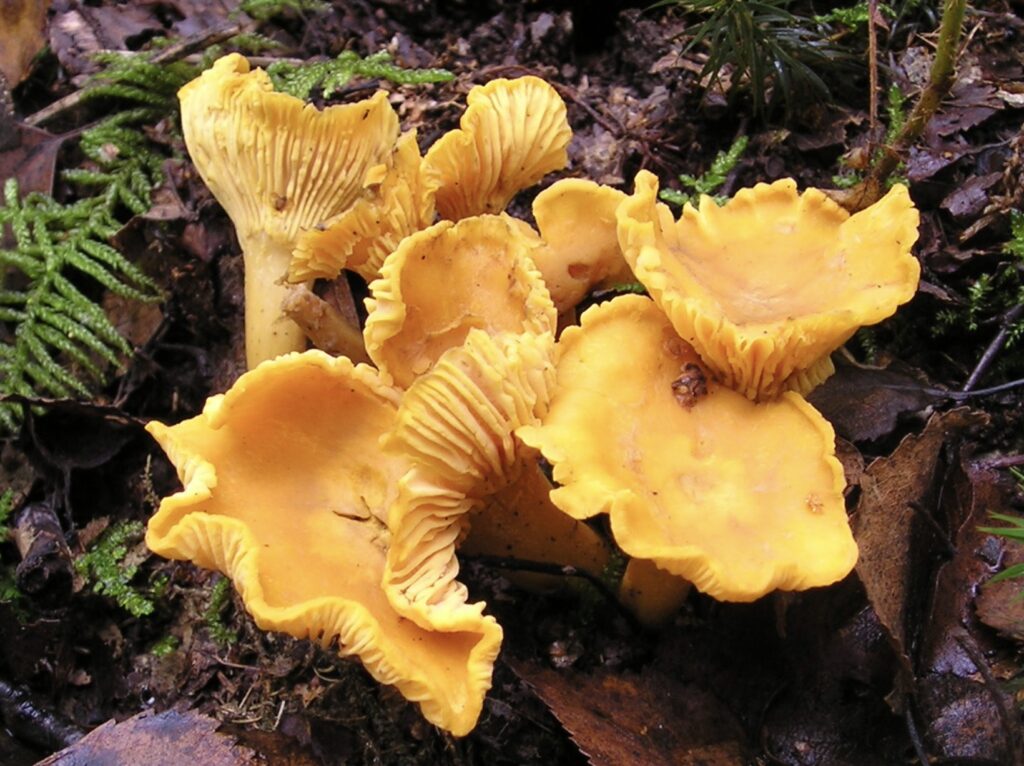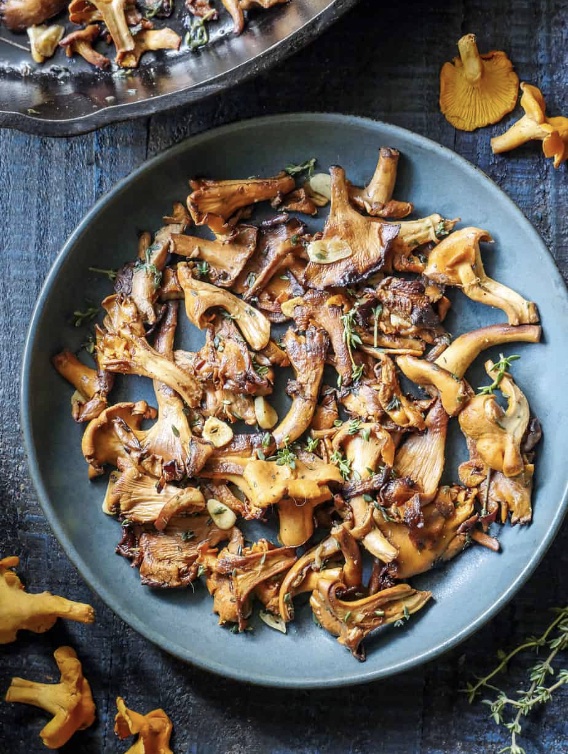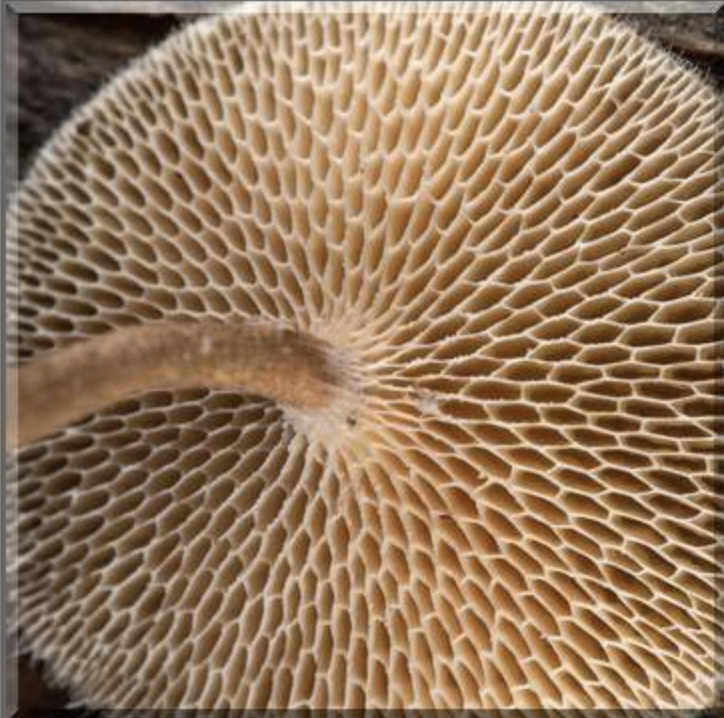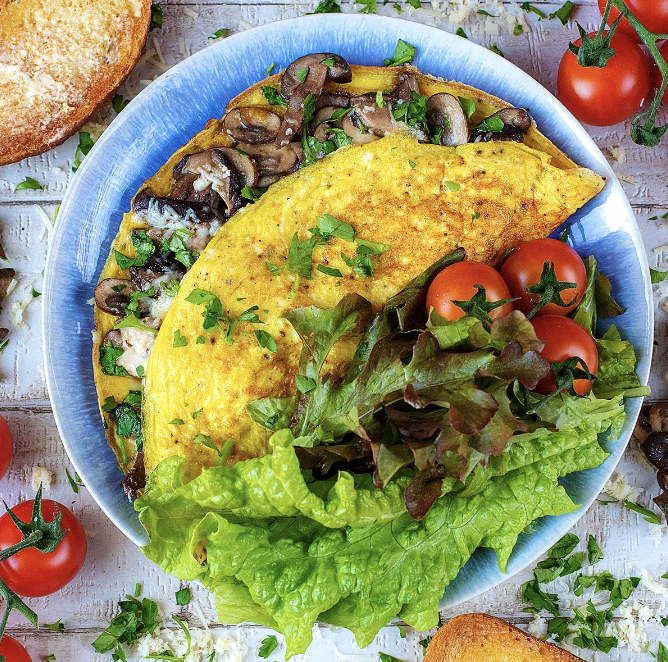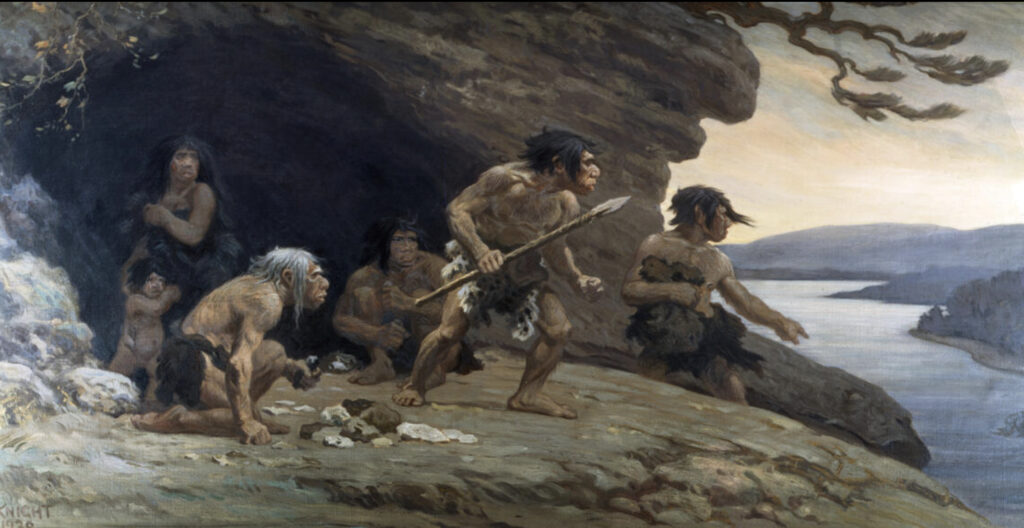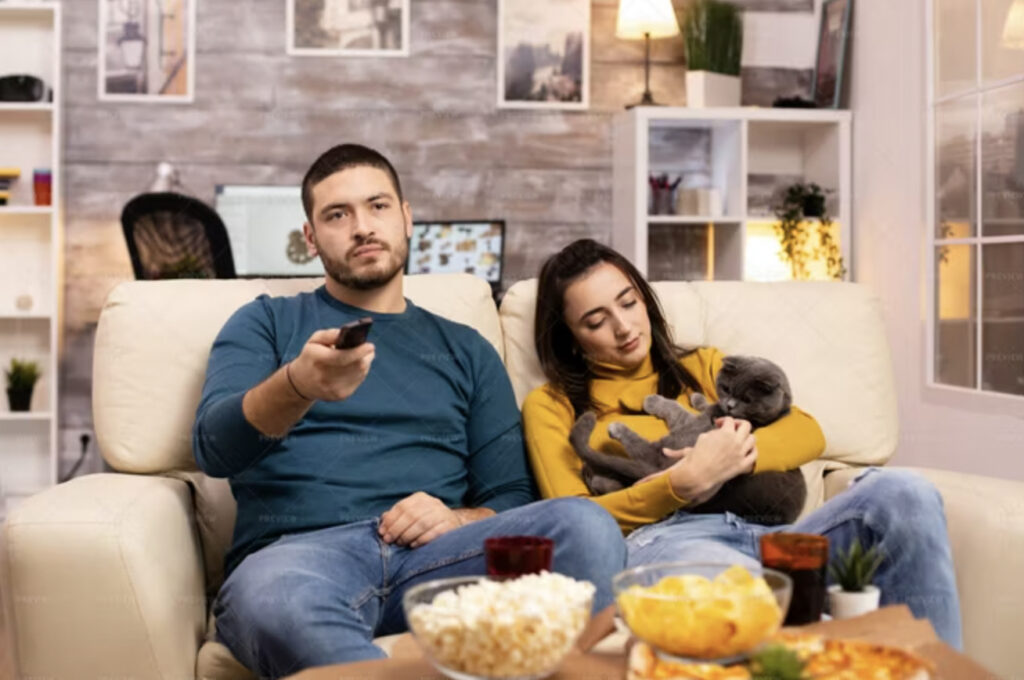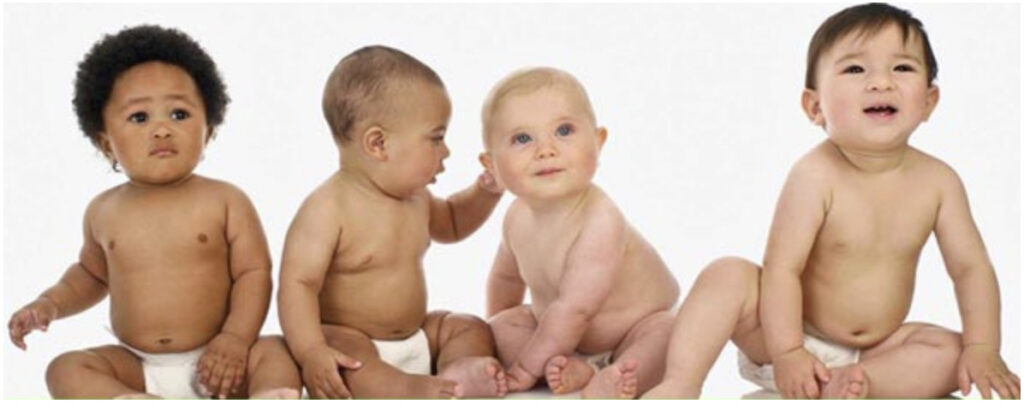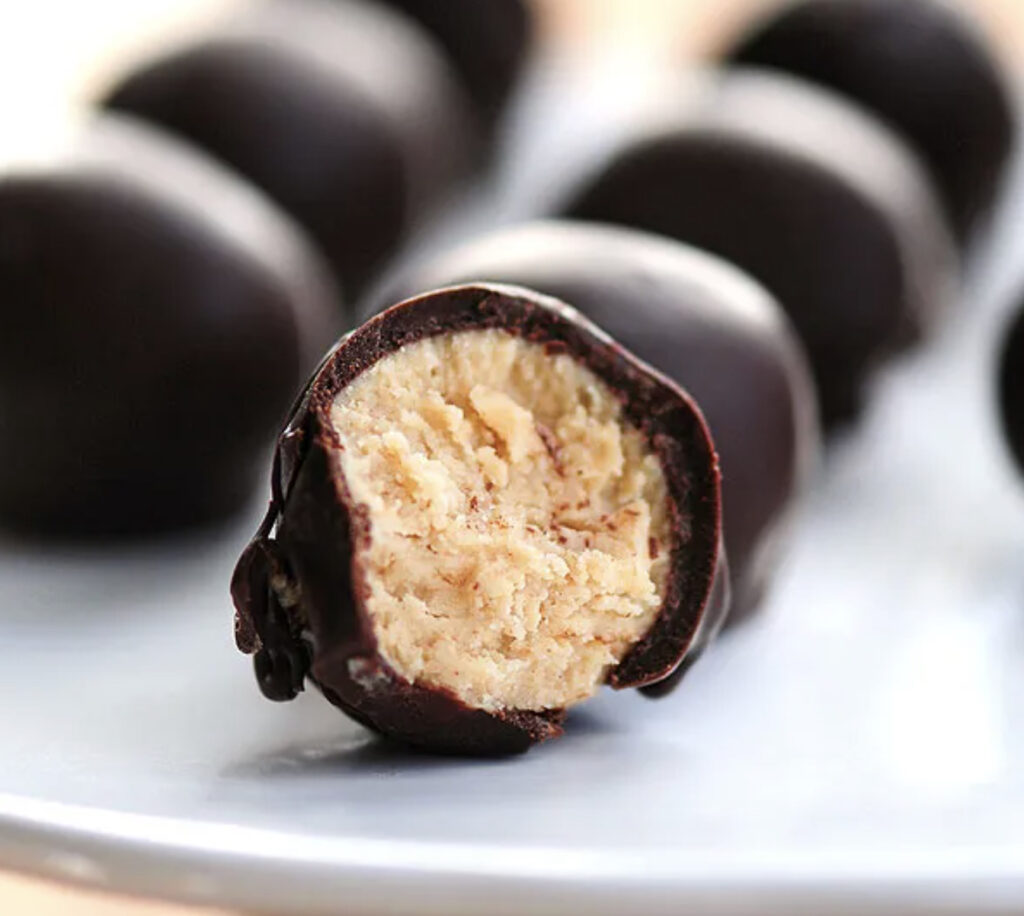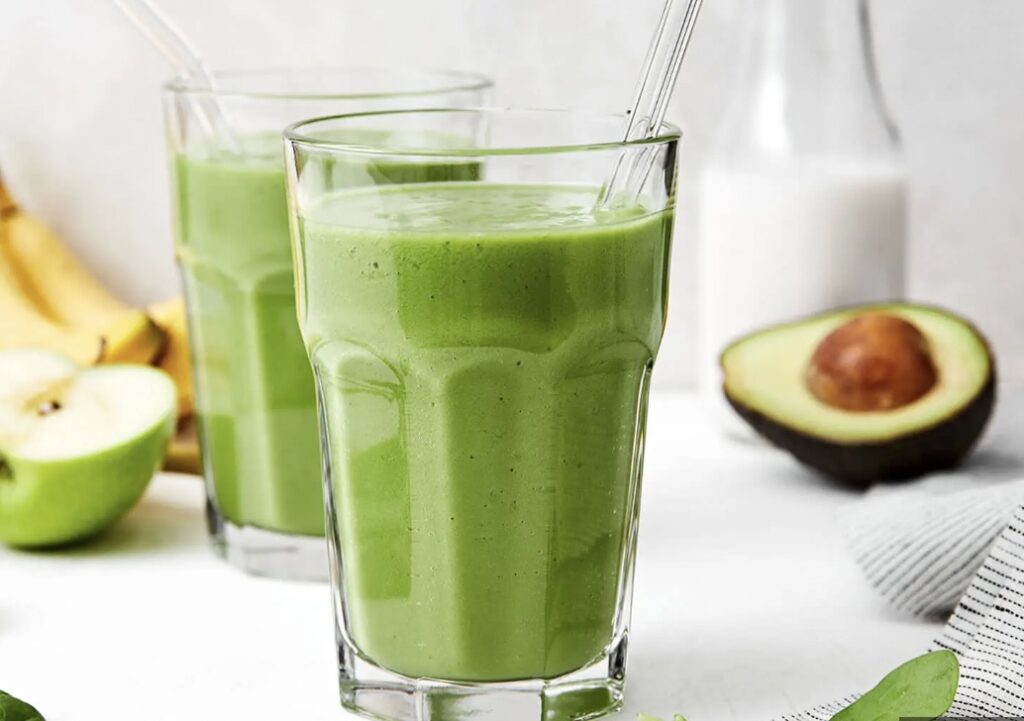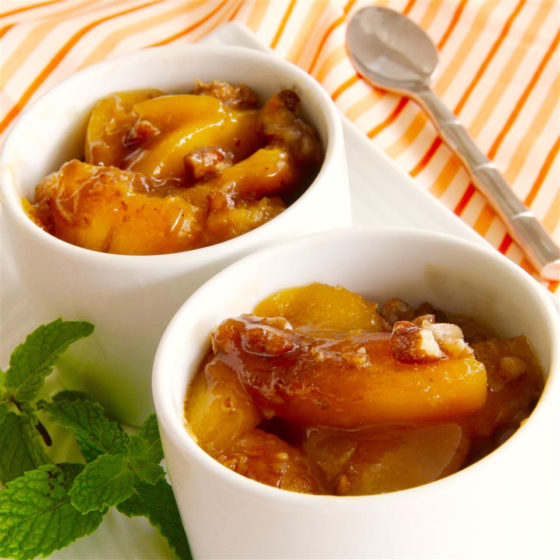Corned Beef with Caramelized Cabbage, Roasted Potatoes, and Carrots: Happy St. Patrick’s Day!

The traditional St. Patrick’s Day meal? Of course, it’s “Corned Beef and Cabbage.” And it usually has carrots and potatoes thrown in. It’s a beautiful dish that satisfies three of the five taste elements: sweet, salty, and umami (the other two are bitter and sour). Umami is an elusive flavor that is rarely present in a meal. It can be described as a pleasant “brothy” or “meaty” taste with a long-lasting, mouthwatering, and coating sensation over the tongue. In this meal, the corned beef is the source of umami. This meal is irresistible, and one of the only occasions when I’ll breakdown and eat red meat.
Now, you may be thinking, “Katherine, isn’t red meat bad for you?” It absolutely is! But my motto is, “every food fits.” You see, you’re protected from the damaging effects of the red meat by the array of vegetables containing antioxidant, and anti-inflammatory nutrients in the meal. They help neutralize the negative aspects of the cured, red meat. Plus, if you rarely eat red meat, that makes a huge difference, too.
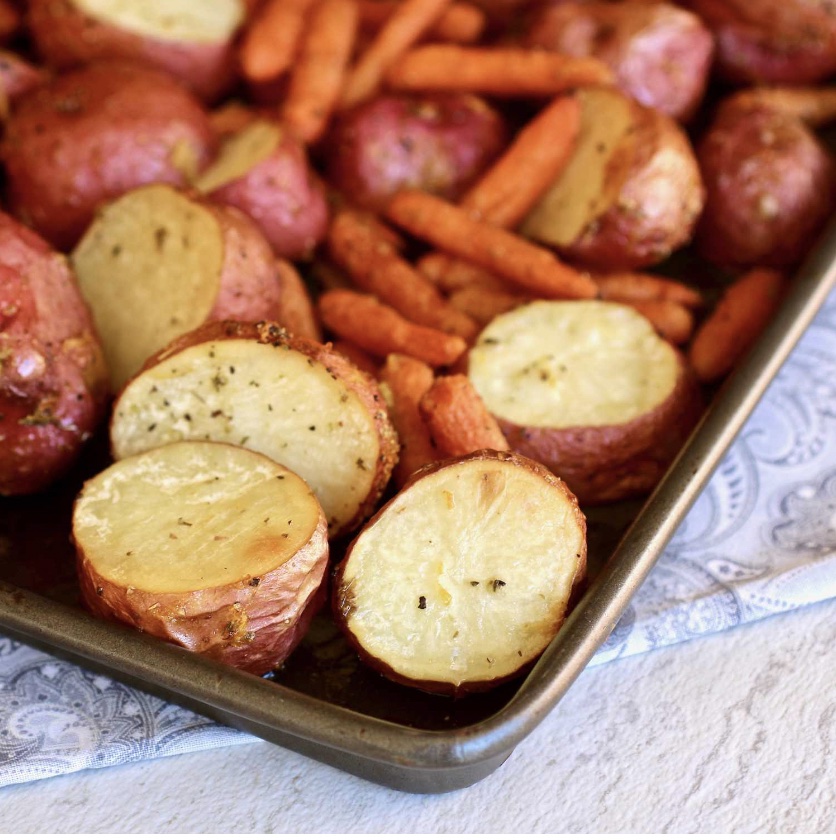
If you’d rather not eat red meat, roasted salmon or chicken can be delicious substitutes.
I maximize the natural flavors and sweetness in the vegetables by stir frying the cabbage, and roasting the carrots and potatoes until they are golden brown and caramelized. Both stir frying and roasting exposes them to open heat. That heat caramelizes the sugars within, and mellows strong flavors into rich, multilayered perfection, adding depth and complexity to the overall dish.
When vegetables are prepared using these methods, they taste like candy, I promise. They are definitely tastier french fries!
Clink my links for the easy “recipes,” that are, actually, more like simple preparation instructions, with only one pan to clean up!
4 Recipes For The Best Darn Mexican Feast Ever – Perfect For Parties!
Katherine’s Especially-For-Parties-And-Game-Days Spicy Layered Bean Dip
A layered dip can be made any way you wish, with each ingredient and recipe personalized to your tastes. This is the way I like to do it!
Everything except my Spicy “Re-Fried” Bean Dip and my “Chili Non Carne” can be bought pre-made at the grocery store these days. You can usually find Fresh Salsa and even Guacamole in the refrigerator sections. But I have great, quick and simple recipes (below) for both, if you are so inclined.
Instructions for Layering:
Use the amount of each layer that you prefer, or the amount that fits your bowl. Layer the ingredients in the order you like best. Use the leftovers as delicious lunches and dinners for days to come!
Ingredients:
Spicy “Re-Fried” Bean Dip OR Katherine’s Chili Non Carne (see both recipes below)
Low Fat Cheddar or Monterey Jack Cheese, Grated
Mild Guacamole, at least triple the recipe (below)
1 Quart Plain, Nonfat Greek Yogurt (I like Fage the best)
Fresh Salsa (see recipe below)
Sliced olives (optional)
Use a glass dish, if available, so all the beautiful layers are visible. First, pour the hot or warm Bean Dip or the Chili Non Carne into the dish, then sprinkle grated low fat cheddar or jack cheese (if this is the next layer, it will melt). Next, spread a double or triple recipe of the Guacamole, then a layer of Plain Greek Nonfat Yogurt over that. Top with the Fresh Salsa. If desired, decorate with sliced olives.
Katherine’s Spicy “Re-Fried” Beans
This is a delicious, spicy crowd pleaser!
Ingredients:
1-1/2 Cups Dry Red Kidney Beans or Black Beans (use about 4 cups, if the beans are already cooked or if they are canned)
1 to 2 Tbsp Canola Oil
1-1/2 Onions
1 Tbsp Salt (only 1 tsp, to taste, if using canned beans)!
3 Cloves Garlic, Minced, to taste
1 Cup Peeled, Chopped Italian Plum Tomatoes (You can buy them already chopped)
2 Small Jalapeño Peppers, seeded and minced (wear gloves!)
2 Tbsp Lemon Juice
1/4 tsp Cinnamon
1/8 tsp Cloves
Top with Low or Reduced Fat Grated Monterey Jack or Cheddar Cheese, if desired
In a very large skillet over a low flame, heat the canola oil and sauté remaining onion, chopped, and the garlic until soft and golden; about 15 minutes. Add the spices and jalapeño peppers, simmer a few more minutes. Next, add the tomatoes and lemon juice.
Pour the canned beans, together with their liquid, into the seasonings and stir. Over a low flame, and stirring often, cook the beans together with the seasonings until the mixture is quite thick, but still moist. Time will vary, but it could take as long as 45 minutes. If the beans become too dry, just add a little water. Sprinkle with the grated cheese, if desired. Use as a dip, as a side dish or in a burrito.
If using canned beans, start the recipe at paragraph #2 and use less salt.
Adapted by Katherine Tallmadge from The Vegetarian Epicure by Anna Thomas
Katherine’s You-Won’t-Belive-There’s-No-Meat Chile
(excerpted from Diet Simple: 195 Mental Tricks, Substitutions, Habits & Inspirations (LifeLine Press)
Try making this recipe a day ahead of time so the flavors and textures have a time to develop. I love this simple, quick chili recipe. It’s meatless but you don’t miss the meat because it’s so flavorful and the meat-like texture is deceptive. You should use the amount of garlic or chili powder that appeals to you. I like it hot and spicy! I double the recipe, using a whole pound of dried black beans, so I have plenty for the week. I use this dish as a lunch or dinner alongside a green salad. I also serve it at parties as a dip next to my fresh tomato salsa, nonfat Greek yogurt, and guacamole. It’s perfect rolled up in a tortilla or stuffed in a taco with some reduced fat cheese.
Sometimes I make the recipe without tomatoes. Give it a taste and decide for yourself. You don’t want the tomatoes to take over the flavors. I don’t use garlic.
Serves at least 6 as a main course, or many more servings as a dip
1 Cup Water (To Hydrate the Bulgur)
1/2 Cup Bulgur (Cracked Wheat)
1 to 2 Tbsp Canola Oil
1 Large Onion, Chopped
1 Large Fresh Green Pepper, Chopped in Large chunks
2 Seeded Jalapeño Peppers, minced
3 Large Garlic Cloves, Minced (more or less) – Optional
1-1/2 Tbsp Hot Chile Powder
1-1/2 Tbsp Chipotle Chili
Dash of smoked paprika, called “Pimentón,”
Pinch of Cinnamon
1 lb. dry Black Beans, or 2 lbs. canned (whichever is preferred)
1 28- oz. Can Chopped Italian Plum Tomatoes, drained, to taste
Salt and Pepper, to taste
Place the bulgur in a microwavable bowl. Add the boiled water. Place in microwave for a couple of minutes. Keep in the microwave while it fluffs up. Set aside.
Heat the oil. Sauté the onions, green peppers, jalepeño peppers, and garlic in the oil over low heat in a large pot until soft, 15 or more minutes.
Add the spices to the sautéd vegetables and cook a little longer – perhaps a minute.
Add the bulgur and beans. Simmer slowly over low to medium heat until flavors are well blended and vegetables are cooked to the desired consistency … a few minutes or longer, if desired. Adjust seasonings to your preference. Since many canned items were used, additional salt will probably not be needed.
Add the chopped tomatoes
NOTE: Best if made in advance or, ideally a day in advance to meld the flavors
Katherine’s Spicy Fresh Mexican Salsa
excerpted from Diet Simple: 195 Mental Tricks, Substitutions, Habits & Inspirations (LifeLine Press)
Fresh salsa – Pico de Gallo – doesn’t really need a recipe. These are proportions I have found pleasing. But you may want your salsa, with more or less onions, more spice, sweeter (use half tomatoes and half watermelon), parsley instead of cilantro… The options are endless.
Ingredients
1 large onion, peeled and chopped (about ½ pound)
2 lbs. fresh tomatoes, peeled, seeded and chopped (start with about 3-1/2 lbs.) (Use canned tomatoes, if good tomatoes aren’t available) NOTE: I don’t bother peeling or seeding!
3 – 4 jalapeño peppers (1 – 2 ounces), to taste
¼ cup chopped fresh cilantro
½ tsp salt, or to taste
3 – 4 Tbsp fresh lime juice or the juice from 1 – 2 limes (optional. I often skip the limes)
Add the onion to the tomatoes. Finely chop 2 of the jalapeño peppers to start with. Taste. If you desire more heat, add 1 – 2 more jalapeños. Mix in the cilantro. Add the salt depending on your taste. Mix in the lime juice.Simple Guacamole
Katherine’s Basic Guacamole
There a a million recipes for Guacamole. You can keep it mild, or make it hot by adding hot peppers. Throwing in fresh salsa makes it chunky and yummy, too.
12 Servings
Ingredients
2 ripe avocados
1/3 cup chopped fresh cilantro
2 Tbsp lime juice
¼ tsp salt, or to taste
freshly ground black pepper, to taste
Cut avocados in half lengthwise and pull out the pits. Scoop out the meat. Place ina medium bowl and mash, keeping some large chunks. Mix in the cilantro, lime juice, salt and pepper. Taste to adjust seasoning.
Now, relax and have some FUN!
Michel Richard’s Chicken, Mushroom & Barley Soup
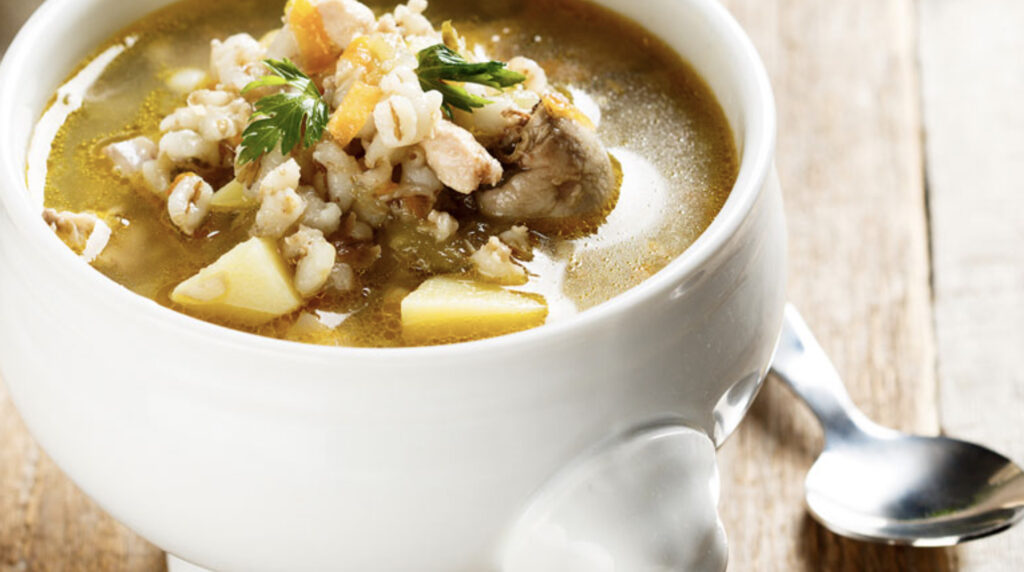
4 servings (or more if you add more mushrooms)
Nothing could be simpler or more delicate than this dish. The flavors are rich and earthy, and contain that elusive fifth flavor, umami. It contains all the elements of a complete meal. It’s nutritious and filling. I feel honored that Michel Richard provided this recipe for Diet Simple. It fits perfectly as something you can cook, store in the refrigerator and eat for several meals. A favorite of anyone who tastes it. Using my method for slicing the chicken, it will be delicate and moist, instead of dry, like most chicken breast dishes.
Ingredients:
2 Tbsp Canola Oil
2 Small Onions, Peeled and Diced
1 Pound Thinly Sliced Mushrooms
2 Quarts Unsalted Chicken Stock (defatted)
2 Tablespoons Light Soy Sauce
6 Tbsp Pearl Barley
4 Cloves Garlic, peeled and minced
Salt and Freshly Ground Black Pepper to taste
About 1 pound chicken, boned, skinned, and sliced thin (see instructions)
Heat the oil in a heavy, large saucepan over medium-low heat. Once the oil is hot, add the onion, cover, and cook until translucent, for about ten minutes – or more, while stirring occasionally. Add the mushrooms. Increase heat to medium-high and cook uncovered until lightly browned, for about five minutes, stirring occasionally. Add the chicken stock, soy sauce, barley and garlic. Simmer gently for about 45 minutes to cook barley and blend flavors. Season with salt and pepper. (This can be prepared ahead, cooled, covered and set aside at cool room temperature for up to four hours or refrigerated for several days.)
To make perfectly tender slices of chicken for your soup, put the chicken breast in the freezer. When it is half frozen, place it on a cutting board. Using a sharp knife, slice as thinly as you can – across the grain. It’s virtually impossible to cut raw meat this thin.
Once the vegetables and barley are cooked, turn off the heat. Toss in the thinly sliced chicken breast. It will be cooked throughout, and opaque, in less than a minute. Ladle into four or more soup plates.
Medicinal Magical Mushrooms: One of the Most Significant & Potent Foods-As-Medicine
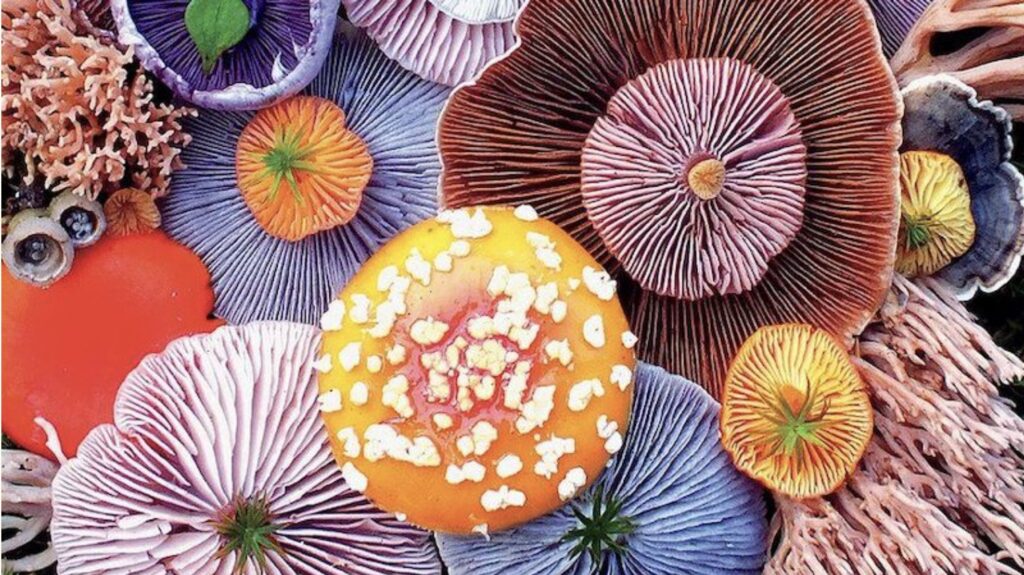
Compared to any other food or supplement, mushrooms’ health and healing benefits are spectacular and unique. And not only do they significantly boost your health, they are natural healers of the environment, too.
“Mushrooms possess antioxidant activity, anti-hypertensive activity, hypocholesterolemic activity, liver protection, as well as anti-inflammatory activity, anti-diabetic activity, anti-viral activity, and anti-microbial activity,” according to this scientific review of all studies to date.
“Mushrooms have been consumed since our earliest history. Ancient Greeks believed that mushrooms provided strength for warriors in battle. The Romans perceived them as the ‘Food of the Gods.’ For centuries, the Chinese culture has treasured mushrooms as a health food, an ‘elixir of life’,” according to this study, which is a great source for learning edible mushroom facts, function, and history.
Healing mushrooms may be edible – or not! If you look up each one, you’ll find which is which. You can buy the exotic, edible types at Farmer’s Markets, or specialty shops. While some healthy ones are safe, you wouldn’t want to eat them because they are bitter and tough. Those are consumed through capsules, extracts, sprays, powders, teas, and syrups, instead.
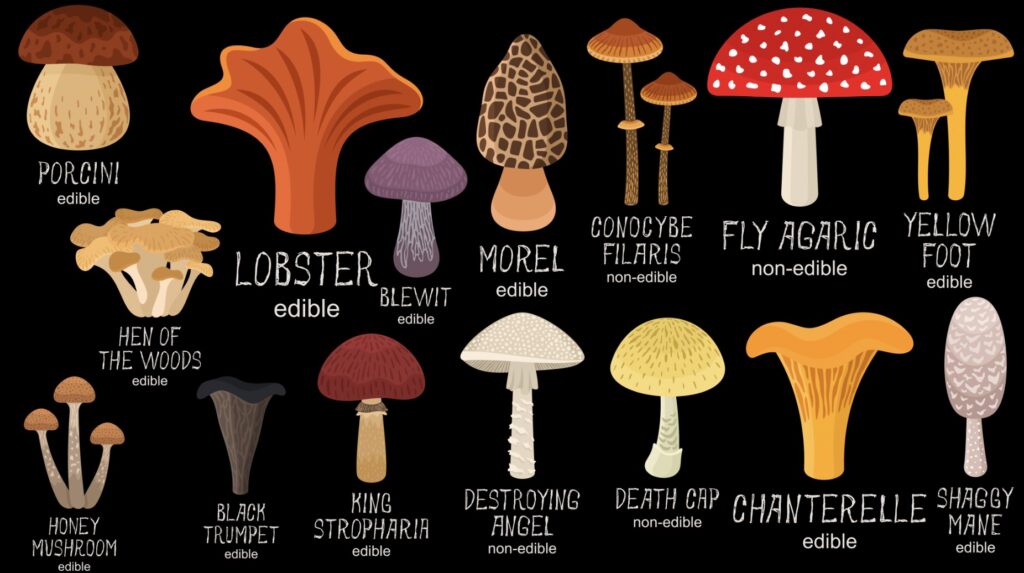
An ardent and renowned mycologist, and mushroom enthusiast for 30 years is Paul Staments. A big and burly Grizzly Adams of a man, he is a pioneer in the cultivation of edible and medicinal mushrooms, and is credited with the discovery of at least five new mushroom species. He’s been featured in scientific papers, and in the fascinating documentary, “Fantastic Fungi,” in which he and a host of scientists excite you – in stunning technicolor – about, well, fantastic fungi! I watched it, mesmerized, while suffering in my dentist’s chair! It’s a must-see for anyone interested in health or the environment.
Staments founded HostDefense.com, which has great information about various mushrooms’ health benefits, and where you can buy mushroom powders and supplements. He also founded Fungi.com, with products that help you grow your own mushrooms, go mushroom hunting, and buy identification guide books. You can even buy mushroom “grow kits” for beginners and those with more advanced experience. I’m experimenting with growing Reishi and Lion’s Mane mushrooms. They are two of the most beneficial mushrooms.
According to a recent study in the journal, Foods, Reishi Mushrooms boost the immune system. They have anti-viral effects, reduce inflammation, and oxidation, potentially reducing the risk for a host of illnesses, including infections, cancer, heart disease, and diabetes. Reishis tend to be tough and bitter, so they’re consumed in supplemental capsules, powders and teas. But just like any supplement, which are concentrated versions of a food or nutrient, they are not recommended in high doses. Eating whole foods is always ideal, but since Reishis aren’t really edible, and supplements provide a concentrated version, be careful not to overdo.
Lion’s Mane may regenerate nerves and enhance brain activity, thus improving memory and other nervous disorders. Luckily, they are edible, and sought after as a culinary delicacy.
While mushrooms have been used medicinally for centuries in the Far East, scientific research on their specific nutrients and benefits is in the early stages in the West. Initial studies are promising, with many benefits already established and recognized by the scientific community.
In Sweden, my home country, mushroom foraging is a national past time. The most desired mushroom there is the chanterelle.
We find their golden clusters in the vast forests, then we run home with our brimming baskets and sauté them. I’m sure they have a host of health benefits, but I don’t really care, because they’re just darn tasty!
Recipe: Find as many chanterelles as you can. Brush them to remove soil. Slice in quarters. If you wish, parboil them for a minute to remove dirt and (possibly) worms. Sauté in hot canola oil until golden brown. Add herbs like thyme or rosemary to the sauté. Sprinkle with salt and pepper. If you like, top with a little grated parmesan cheese. Et Voilà! We serve them on toast.
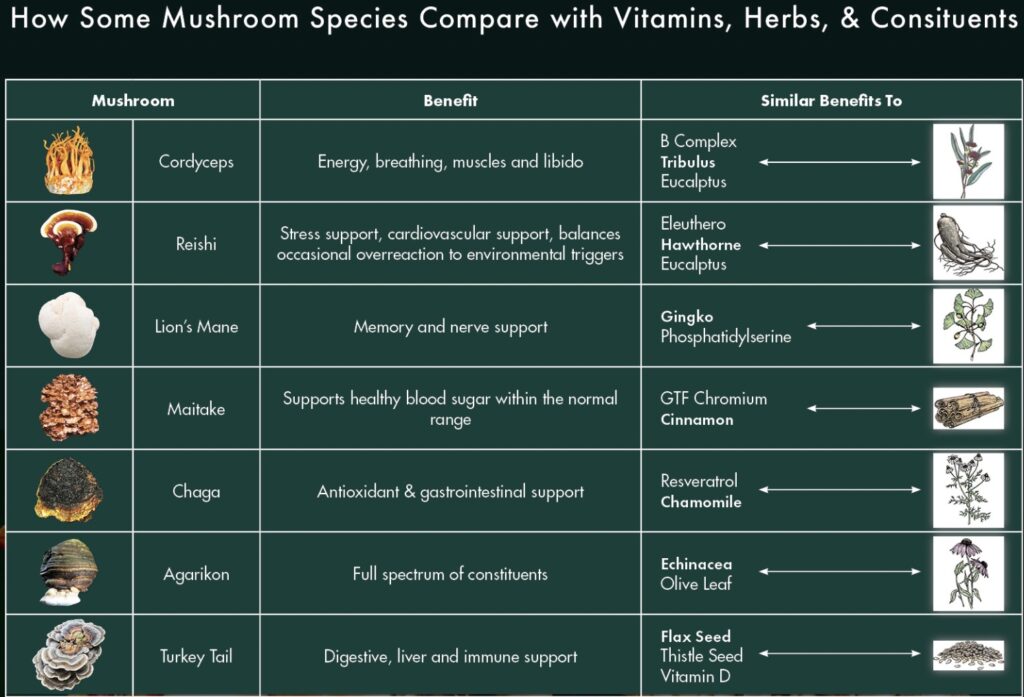
The following is a scientific chart of medicinal mushrooms’ extensive and established benefits.
(At the bottom of this chart, see * , and ** , to help us understand this chart’s terms and definitions better):
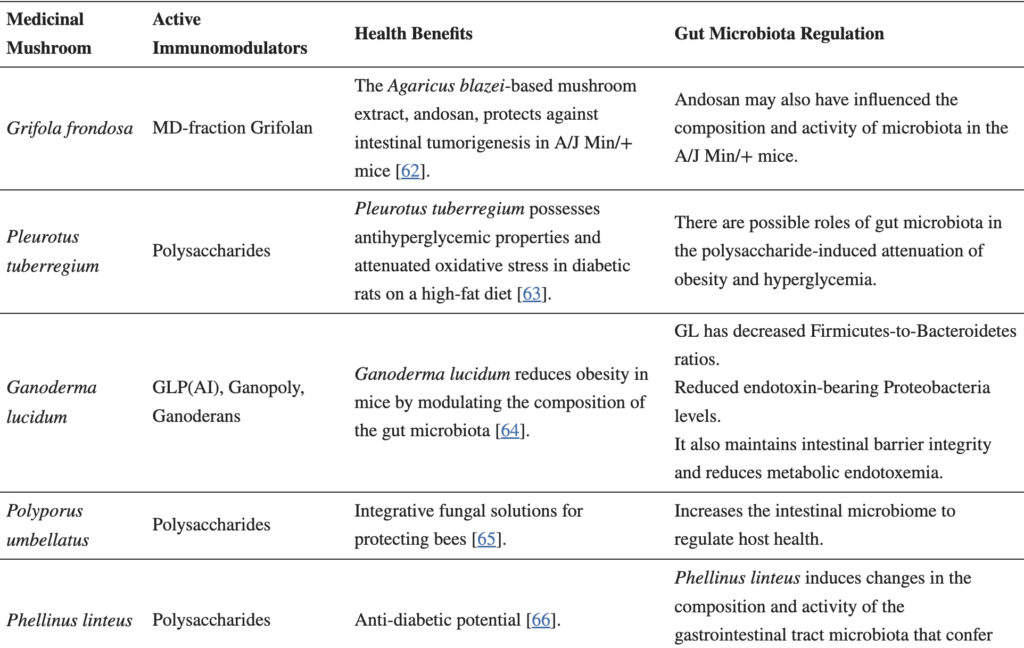
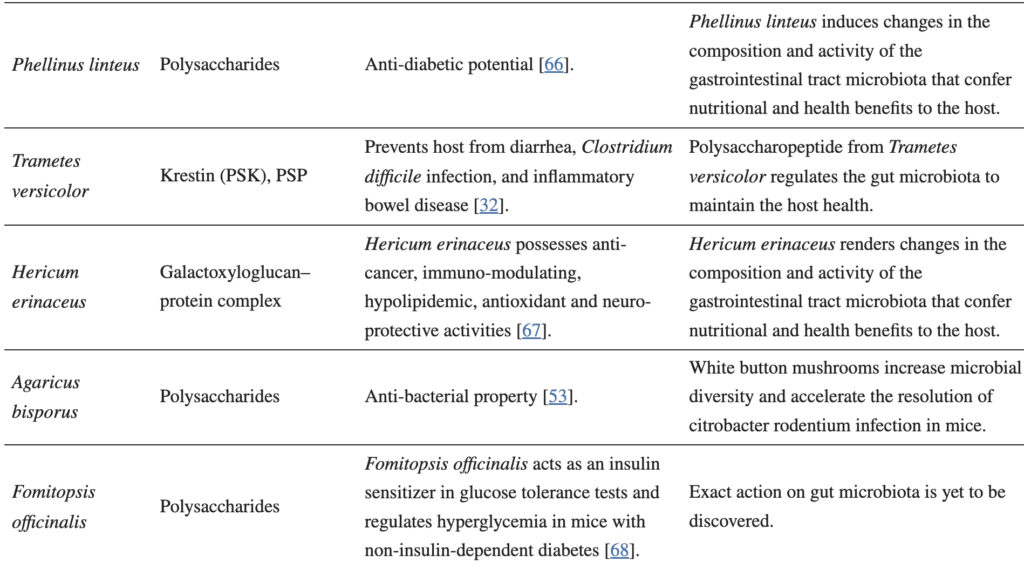

*To translate this chart, consider the “Host,” as YOU when it describes their health benefits of the gut’s microbiota. **Google the scientific name to get the mushroom’s name in English. For instance, “Grifola Frondosa” is “Hen-Of-The-Wood.” “Ganoderma Lingzhi” are “Reishi.”
Mushrooms Clean Up Pollution – Goodby Oil Spills, Plastics & Poisonous Drinking Water

While my dentist was fitting me for three crowns (bad teeth genes), and while I was thankfully distracted from the drilling in my mouth, I learned how mushrooms can absorb and reduce pollutants. “More than 20% of global deaths can be traced to pollution-related health complications. Pollution impacts almost every aspect of our existence, the living, and nonliving components of the environment,” according to this review of plastic pollution. Mushrooms are remarkable, alien-like creatures. They even clean up oil spills!
Mushrooms are the perfect solution for so many reasons. They eliminate the need to transport toxic materials to treatment sites. They’re environmentally friendly, need only a small amount of space, and are a low cost solution. The work can be done with less skilled people, and can be used easily wherever needed.
Mushrooms are a simple tool for cleaning up the environment. Using mushrooms is a biological approach to “clean technologies,” which emphasizes maximum production, reduced waste generation, treatment, and conversion of waste into a useful forms. These clean technologies focus on the use of biological methods for the remediation of waste. Mushrooms improve the environment in a vast number of ways. They absorb like sponges, and their enzymes break down a wide range of environmentally persistent pollutants:
1) Plastic pollution has been a persistent and global problem for more than half a century. Various health conditions such as thyroid dysfunction, obesity, diabetes, and reproductive impairment have been attributed to plastic pollution, according to this review in Frontiers in Marine Science. Plastic pollution comes from synthetic fibers, paints & coatings, tire tread abrasion, cosmetic products, packaging, and more. According to some, we have become a plastic society.
2)2,4-Dichlorophenol (DCP), a pervasive pollutant, DCP is a deadly byproduct of improper disposal in the manufacture of various consumer products, drugs, pesticides, food additives, fuels, and industrial solvents. It’s found in water, air, and soil. Agricultural use of pesticides, insecticides, and herbicides are the main source of water pollution.
3) Oil spillages into the environment have become one of the biggest problems in the last century. It is notoriously resistant to clean up efforts, with oil spills, tank leakages, and waste water disposal the major sources, according to this review in 3Biotec. Oil pollution has been implicated with higher risks for asthma and other respiratory conditions. It weakens the immune system, causing a multitude of conditions, including a higher rate of various cancers, and poor pregnancy outcomes. This study, in Saudi Arabia, with its preponderance of crude oil pollution, found certain strains of mushrooms significantly degraded crude oil. The researchers found they helped preserve the environment and cleaned crude oil in the soil.
4) Healthier protein sources have been developed using mushrooms, with their naturally-occuring enzymes. They eliminate the need for environmentally and health damaging sources of food proteins, for instance, industrial animal farming. Mushrooms have a low cost of production, an abundant supply, and thousands of bioactive phytonutrients (phyto is Greek for plant), compounds beneficial for health.
Mushroom Recipes
Michel Richard’s Chicken, Mushroom and Barley Soup
excerpted from Diet Simple: 195 Mental Tricks, Substitutions, Habits & Inspirations
4 servings (or more if you add more mushrooms)
Nothing could be simpler or more delicate than this dish. The flavors are rich and earthy, and contain that elusive fifth flavor, umami. It contains all the elements of a complete meal. It’s nutritious and filling. I feel honored that Michel Richard provided this recipe for Diet Simple. It fits perfectly as something you can cook, store in the refrigerator and eat for several meals. A favorite of anyone who tastes it. Using my method for slicing the chicken, it will be delicate and moist, instead of dry, like most chicken breast dishes.
Ingredients:
2 Tbsp Canola Oil
2 Small Onions, Peeled and Diced
1 Pound Thinly Sliced Mushrooms
2 Quarts Unsalted Chicken Stock (defatted)
2 Tablespoons Light Soy Sauce
6 Tbsp Pearl Barley
4 Cloves Garlic, peeled and minced
Salt and Freshly Ground Black Pepper to taste
About 1 pound chicken, boned, skinned, and sliced thin (see instructions)
Heat the oil in a heavy, large saucepan over medium-low heat. Once the oil is jot, add the onion, cover, and cook until translucent, for about ten minutes – or more, while stirring occasionally. Add the mushrooms. Increase heat to medium-high and cook uncovered until lightly browned, for about five minutes, stirring occasionally. Add the chicken stock, soy sauce, barley and garlic. Simmer gently for about 45 minutes to cook barley and blend flavors. Season with salt and pepper. (This can be prepared ahead, cooled, covered and set aside at cool room temperature for up to four hours or refrigerated for several days.)
To make perfectly tender slices of chicken for your soup, put the chicken breast in the freezer. When it is half frozen, place it on a cutting board. Using a sharp knife, slice as thinly as you can – across the grain.
Once the vegetables and barley are cooked, turn off the heat. Toss in the thinly sliced chicken breast. It will be cooked throughout, and opaque, in less than a minute. Ladle into four or more soup plates.
Eggs Scrambled with Mushrooms, Onion, Garlic, and Sweet Cherry Tomatoes
This is a great meal for me any time of the day – quick, easy, and delicious
Servings: 1
Heat a teaspoon to tablespoon of canola oil in a shallow nonstick pan. Saute 1/4 chopped sweet onion and a smashed garlic clove over medium heat until almost soft. Add a handful of tomatoes to the pan (or any other vegetables you happen to have such as chopped spinach or peppers) and cook for another 5 minutes. In a separate bowl, whisk 2 eggs. Pour eggs into the pan containing the onion, garlic and tomato – add 1 ounce lite cheese (I love the Trader Joe’s. It melts beautifully and tastes even better). Stir continuously until eggs are cooked. Pour over toasted whole rye bread.
NOTE: Use canola oil instead of olive oil. Olive oil is more likely to burn. It also loses all of its nutrients when you cook with it. Save it for drizzling.
The Perfect Storm: Battling the Blizzard Bloat Blues

These days you may have noticed a subtle expanding of yours and your friends’ waistlines. Take consolation in knowing you are not the only ones suffering from… “BLIZZARD BLOAT,” that creeping up of body fat that has hit many of us recently, according to an informal survey of frustrated, and slightly fatter colleagues and friends.
In the animal kingdom, fattening up for the cold winter months is critical for survival. For human animals, that leftover caveman-instinct to gorge on fattening foods, and hibernate, just causes trouble
Though these old instincts are plausible as a partial cause of winter weight gain, there are more complex—and controllable—causes too. The most important involve decreases in sunlight, physical activity, increases in cravings, and comfort eating. It’s the perfect storm of factors that create the calorie imbalance leading to blizzard bloat.
The Perfect Storm
- Physical Inactivity. When it’s cold outside, we tend to exercise less and even cut back on subtle calorie-burning activities such as short walks, light outdoor chores. This lack of calorie burning may only add up to about 100 fewer calories per day, but a deficit of 100 calories every day, translates to a 3-4 pound weight gain during the winter months, and 10 lbs in a year,
- Perpetual Darkness. Most of us are affected by winter’s gray days, and sunlight deprivation. We need light so our brains have enough of the neurochemical, Serotonin. A decrease in seratonin can increase our chances of experiencing a low mood, and food cravings. A small percentage of people are particularly vulnerable. About 5 percent of the population become markedly depressed with Seasonal Affective Disorder (SAD).
- Cravings for Warm Comfort Foods. Being light deprived, and hibernating inside instead of getting outside and moving, reduces the happy chemicals in your brain, like endorphins, and serotonin. This can lead to increased cravings of fattening food. Studies show excess calories contribute more significantly than any other factor to the calorie imbalance causing blizzard bloat.
Strategies for Battling the Blizzard Bloat Blues
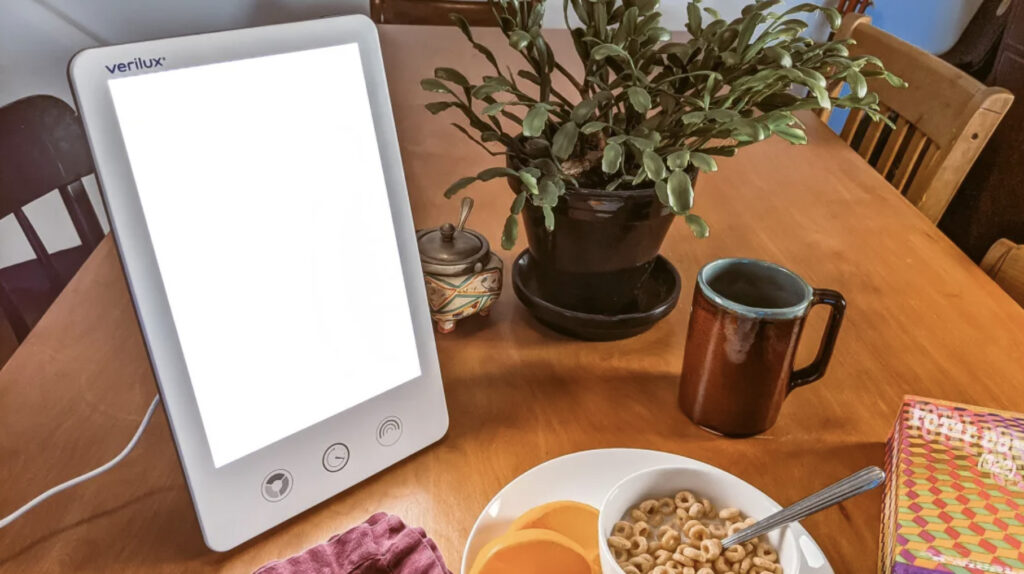
- Get some daily sunshine. You’ll feel refreshed and less bored if you walk outside, and your appetite may be more controllable. The amount of needed daylight varies for each individual. In general, the more the better. One hour daily in the morning, ideally at sunrise, is most helpful. If you’re not an early bird, several hours on the weekends may help make up for a lack of sun during the week. But the sun has to reach your eyes, so no sunglasses. If you don’t feel comfortable with the guidelines, or If going outside isn’t always an option, light therapy, also known as phototherapy, may help. Ask a mental health professional about the special lamps you can buy to make up for light deprivation. They work! Studies show they increase serotonin and help decrease depression in most people.

- Up your activity level. Just a little means a lot. During just one exercise bout (only 10 minutes), your brain releases the feel-good neurochemicals, endorphins and serotonin. They reduce pain, increase feelings of well-being, elevate your mood, and will help reduce cravings. If you’re regularly active, these benefits multiply. A brisk 30-minute walk – just as effective as running – three times a week relieves major depression just as effectively as an antidepressant in most adults. Of course, moving even more, gives you even more significant benefits.
- Hold on to your favorite dishes, just rearrange them a bit. In the winter, we tend to crave more fattening, warm, comfort foods, and fewer healthy cold foods, like salads. But your comfort foods don’t have to be fattening. My advice, which has been successful for me and my clients, is to continue eating your favorite foods, just change their balance slightly. It’s been well established that you can increase the volume and satisfaction of your meals and dishes – that is, you can eat more food for fewer calories – by simply incorporating veggies or fruits so they comprise at least 50% of the volume on your plate (eat them first to slow you down) or in your dish,
- Veggies and fruits are predominantly water. But because the water is incorporated into the food, as opposed to just a glass of water, the meal will empty from the stomach more slowly. The slower a food empties from the stomach, the more satisfied we are with it. With that in mind, all you have to do is incorporate water or broth into your main course to create a soup or stew, add veggies to a favorite stew or casserole, so that vegetables comprise half or more of the volume. Try having a simple veggie soup as a first course to any meal. Try this technique that makes veggies taste even better than French fries! These strategies – incorporating water, and adding fruits and/or veggies to your meals and dishes – allows you to enjoy your favorite foods. But it also means that you can eat more food for fewer calories. Studies show that, for each meal that you use this strategy, you save 100 calories, naturally – without even trying. That amounts to keeping off 10 lbs a year or preventing blizzard bloat. Try my sumptuous soup recipes to feel full, satisfied, but still keep calories under control.
The New, and Improved, “Once-A-Day-Keeps-the- Doctor-Away” Superfood: Move Over Apples!

“Diet Simple Farm To Table Recipes: 50 New Reasons to Cook in Season”
While our grandmothers told us that an apple a day keeps the doctor away, modern science begs to differ. Move over apples – There’s a new boss in town. YOGURT!
For years, I wondered why my clients, whom I encouraged to eat yogurt, lost weight more easily – while also increasing muscle. They said they felt more energetic, too. Scientific research is now backing my observations of 30+ years.
Around 2010, I attended a three-day National Institutes of Health consensus conference presenting all of the research to date about the human gastrointestinal tract’s microbiome, that is, its microscopic “ecosystem” of cells. By 2010, a wealth of new data had found that its effects were so vast and profound, it could make – or break – your health.
Your body contains human cells and microbial cells (microbes). The human’s gastrointestinal microbiome also contains both types of cells. The major difference is that human cells contain genetic material inside its nucleus. Whereas microbial cells – what I’m discussing in this article – which includes bacteria, archaea, fungi, protists, and viruses, do not. Both microbial cells and human cells play critical roles in your health. Our bodies have 10 trillion human cells, but, at 100 trillion, there are 10 times that amount of microbial cells. Given the enormous number of microbial cells, or bacteria, their effect is immeasurable, and extremely influential. That said, you must make sure your healthy microbial cells outnumber the dangerous ones – big time! Here’s the full story…
There are healthy, beneficial microbes and unhealthy, dangerous types. The most dangerous microbes, the ones that cause disease, are those that are easily transmitted. They are virulent, and invasive to central organs like the blood and lungs. They’re survivors. They have a low infection dose, and are without any specific treatment or vaccine. Most of them are transmitted from animals or insects. The most dangerous microbes cause a very high death rate, are identified as high-risk agents or “biohazard-level 4” agents, and are treated at the highest level of infection protection, with strict isolation measures: Think COVID.
But most of the time, microorganisms live in harmony with their human hosts, providing vital functions essential for survival. Microbes inhabit just about every part of the human body, living on the skin, in the gut, and up the nose. They are essential for good health.
If infants are born naturally, as opposed to a cesarean delivery, and if they are breastfed, they start their lives with the highest number of healthy microbes. Whereas, their cesarean section, bottle-fed counterparts don’t develop those advantages. The higher amount of beneficial microbes give them a superior immune system, better health, and a high level of safety from numerous communicable, and non-communicable diseases in early life. That’s because the birth canal, and breast milk, contain a host of beneficial microbes that are impossible to regain as adults.
The infant’s microbial advantages continue later in life, too. Even as adults, they provide numerous advantages over people who were bottle fed, and cesarean born. The lack of those healthy microbes correlates with inflammation, and a number of illnesses, potentially effecting every organ in the body. This increases your risk for the metabolic syndrome, a group of conditions – insulin resistance, a precursor to diabetes, high blood pressure and cholesterol – and a host of other illness. More than five decades of established research has found that, if babies are not breastfed, it correlates with overweight and obesity (I learned this in college, though that was NOT 50 years ago, I’ll have you know!). The metabolic syndrome increases your blood levels of insulin, a known “growth factor.” Growth factors increase inflammation and unchecked cellular growth (cancer). Growth factors increase your chance of illnesses that can effect every organ in your body, including coronary heart disease, colon, breast prostate cancer, eye conditions, reduced bone mass, and more.
Aging is also associated with fewer beneficial microbes. Aging affects virtually all tissues and cellular circuits in our bodies resulting in frailty and death. Not only aging, but other factors, such as overweight, obesity, inactivity, and stress, also decrease beneficial microbes, leading to inflammation, compromised immune systems, susceptibility to acute and chronic illnesses causing sicknesses, hospitalizations and even death. They include infections of every type, colds, flu, COVID, reductions in vaccine effectiveness, food borne illnesses like salmonella and E-Coli, bone loss, even mental illness. To counteract those disadvantages, living a healthy lifestyle makes a significant positive difference.
THE POSITIVE NEWS
That said, you can still achieve a healthy gut filled with beneficial microbes, even if your mother required a cesarian section, or couldn’t breast feed. .
YOUR DAILY PRESCRIPTION
However, an exceptional diet and lifestyle are necessary to make up for those disadvantages. The most important foods to eat are those that naturally contain probiotics, namely, dairy yogurt, and possibly the new non-dairy varieties. Also, dairy, and non-dairy kefir. Both are the only foods associated with significant health benefits. Probiotic supplements, and foods/drinks with probiotics added, haven’t been studied adequately to determine their effectiveness. Yogurt and kefir have been found to improve wound healing, recovery from illnesses, reductions in inflammation, colon, breast and prostate cancers, and eye diseases. They have also been found to decrease the risk for conditions caused by inflammation, like Alzheimer’s, cardiovascular disease, osteoporosis, irritable bowel syndrome, diarrhea and/or constipation, bone and dental health, infectious diseases, and others.
But probiotics can’t work alone. To be effective, you also need foods containing prebiotics to create the healthy gut you need. Prebiotics nourish probiotics. Together they form the critical prebiotic/probiotic duo creating a microbiome teeming with healthy microbes that achieve the superior level of beneficial microbes that fight off chronic and acute diseases. Only then can you achieve maximum health advantages. Prebiotics can be found in various high fiber plant foods as diverse as almonds, agave, barley, wheat, oats, garlic, leeks, onions, flax seeds, artichoke, asparagus, bananas, and more.
Breast milk contains both prebiotics and probiotics, which is why it is so protective.
Problem is, most Americans have an unhealthy diet that increases the damaging microbes in their gut. They don’t eat enough, if any, foods high in either pre- or probiotics. This may explain our high incidence of chronic illnesses.
Based on research, and my own observations, I believe eating yogurt daily is the easiest way to make up for the healthy gut we abused by eating the typical American diet growing up – and even now. Can you imagine anything easier? (besides dreaming, wishing, and hoping?)
All you need to do is include yogurt, a few veggies, fruits, almonds, or oat-based cereals (Cheerios, oatmeal) here and there. Try “Katherine’s Simple ‘Oatmeal Cookie’ Oatmeal: an Easy Step-by-Step Guide” That Even Your Kids Will Love!. How about this great dessert? “Chocolate Covered Peanut Butter & Oat Balls.” It’s a fun activity for you kids, too! (don’t tell anyone it’s healthy)
As of yet, there is no reliable clinical test any doctor can use to measure your gut microbes, or the health of your microbiome. We don’t even know everything that we need to be looking for. The gastrointestinal tract is still quite mysterious and idiosyncratic, so your best strategy is having the best diet and lifestyle habits you can.
I work with many clients with gastrointestinal issues, and their solutions vary widely, but, in my experience, when their nutrition is tailored to their individual needs, their lifestyle, and medical condition, a personalized nutrition plan makes a profound difference – virtually to a person.
If you think you don’t like yogurt, I’ve found that if you do some taste testing and experimenting, you are guaranteed to find one or more that you enjoy. There are savory, and sweet ways to try it.
Savory variations: Use Nonfat, Plain Greek Yogurt (my favorite is Fage) in place of sour cream. Make dips, for instance, Onion Dip, by mixing in chopped/minced onions, salt & pepper. How about a spicy dip by swirling in Sriracha sauce. Create an Italian version with pesto. Use it in burritos and tacos. In many parts of the world, yogurt is eaten together with spicy dishes, especially with chopped cucumbers. With curry, and many Middle Eastern dishes, for example. I love placing a dollop on my potatoes (instead of sour cream) and soups. My technique for eating it with soups and savory dishes is to place a little yogurt together with the accompanying food in one spoon. The cool and the hot together are delicious complements to each other. Stirring all of it together, well, it doesn’t bring the added excitement that I crave in my food. Remember to add a little (Iodized) salt & pepper, or it may taste too bland. In the summer, Cool Cumber Soup with Dill or Cilantro, and Swedish Cucumber Salad with Dill are party favorites. In fact, whenever I make my mother’s Cucumber Salad, it disappears quicker than anything else. It can lead to all out war between the party’s, normally civilized, competitors.
Of course, we all know about the sweeter versions. Fruited yogurts, lemon, vanilla, chocolate, you name it. Give all of them a try. ANY yogurt contains probiotics. And please, don’t worry about the small amount of jam in yogurts. Studies show fruited yogurt doesn’t raise blood sugar significantly, so they’re not associated with high blood sugar levels, insulin resistance, or the illnesses that go along with it.
I enjoy it as part of desserts, too. A traditional Swedish meal is crepes with sour cream and lingonberries. But I’ve found that my favorite Fage Greek Yogurt is an excellent, even better, substitute for sour cream. Swedish Waffles, Vanilla Bean Yogurt and Fresh Summertime Peaches/Fruit, while not 100% healthy, still gives me an opportunity to eat yogurt in a delicious way – as an occasional dessert, or decadent breakfast.
After all, everything you eat must be DELICIOUS! That’s the only way we can continue eating healthfully, in a sustainable way.
Golden Brown, Sweet Caramelized Cabbage for “The Luck O’ the Irish” on St. Paddy’s Day!

Think you don’t like cabbage? Then you’ve never tasted caramelized, golden brown, stir fried cabbage. If you are not a lover of cabbage, you will become a boisterous believer after you try this very simple recipe, and so will any person you serve it to. But hurry! St. Patrick’s Day on March 17th would be the ideal time to get a taste of the “Luck O’ the Irish.” Any time I serve Caramelized Cabbage, my guests ask, “What is this? It’s delicious!” They practically fall out of their seats when I reveal, “It’s sautéed cabbage.”
It tastes like candy, I promise!
Katherine’s Caramelized Cabbage
My favorite variety of cabbage is the milder, more tender Savoy Cabbage, but any type works brilliantly prepared this way.
Directions:
In a large skillet (iron works best), heat a couple of tablespoons of Canola Oil on medium/high. The temperature has to be hot enough to evaporate the water leaching from the cabbage as it cooks. For exceptional cabbage, or any vegetable, allowing it to drown in its own water leads to your steaming it instead of sautéing it. Steaming does not achieve the mouth-watering flavor you crave. I learned this tip from celebrity chef, Alton Brown. Every vegetable I’ve served using this method gets devoured. And since veggies should dominate your meals, they have to taste good, well, not just good: Mind blowing!
I digress…
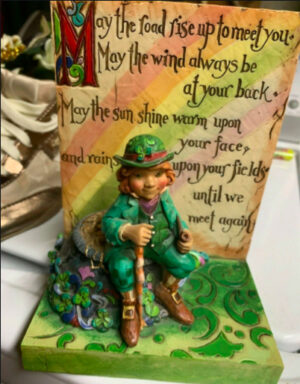 Once the oil is hot (“Don’t add anything until the oil is hot,” says Seasons Culinary’s Chef, Janis McLean), add the chopped (not grated) cabbage. Chop the cabbage into rough chunks (Definitely more Irish-like). No neat or perfect, petite cubes allowed (too British-like for our purposes here). Add onions and garlic if you wish. Add diced red bell pepper for color, too. Sauté until golden brown while constantly stirring. This may take about 25 to 30 minutes so if you’ve got kids (slaves) around, throw them into the mix. Keep scraping the bottom of the pan. Don’t worry if the pan is getting brown. Just keep scraping and tossing. Let sit for 10 or 20 seconds between tosses to caramelize the cabbage nicely, but don’t let it burn. Add a pinch of salt and pepper after about 15 minutes of sautéing. Keep sautéing until the mixture is nicely browned and tastes sweet.
Once the oil is hot (“Don’t add anything until the oil is hot,” says Seasons Culinary’s Chef, Janis McLean), add the chopped (not grated) cabbage. Chop the cabbage into rough chunks (Definitely more Irish-like). No neat or perfect, petite cubes allowed (too British-like for our purposes here). Add onions and garlic if you wish. Add diced red bell pepper for color, too. Sauté until golden brown while constantly stirring. This may take about 25 to 30 minutes so if you’ve got kids (slaves) around, throw them into the mix. Keep scraping the bottom of the pan. Don’t worry if the pan is getting brown. Just keep scraping and tossing. Let sit for 10 or 20 seconds between tosses to caramelize the cabbage nicely, but don’t let it burn. Add a pinch of salt and pepper after about 15 minutes of sautéing. Keep sautéing until the mixture is nicely browned and tastes sweet.
Cabbage, like most vegetables, is about 90% water, so it will cook down a lot – and in the process keep you slim and trim because it fills you up with very few calories.
Use at least a whole head. If you have any left, toss it into soup, or make your own simple soup by adding broth. You could call it, if you felt generous at the moment (I did not mean to doubt your generosity), “Katherine’s Cabbage ‘Diet’ Soup.”
This is perfect served the traditional Irish way on St Paddy’s Day: With cabbage, potatoes, carrots and corned beef. If you’d rather not eat red meat, chicken and fish are excellent choices.
But most importantly, don’t forget the green Guinness Stout, nonalcoholic beer, Irish Whiskey, or smoothie.
Enjoy! And may the road rise up to meet ye…
Good Grub For the NFL Season Opener! Tacos & Chip Dips
On September 11th, when Americans collectively remember and pay tribute to the 19th anniversary of America’s devastating loss of lives, we can also celebrate two of our favorite past times, food and football. You could say it’s a bittersweet All-American day.
I’ve developed many recipes over the years. These are two of my favorite easy, delicious and nutritious that I believe are perfect for special sports events, family gathering and prayers.
Quick & Easy Soft-or Fried-Tacos with Cheese, Fresh Tomatoes, Onions & Jalepeño Peppers
It’s Peach Season! 6 Peach Recipes Your Family Will Love
I’ll never forget my first trip to Italy. I was 19 and touring solo through Europe by train with the Eurail Pass. Despite the Italian men giving me a scare – pinching, grabbing, kissing and chasing (I think it goes without saying… with no encouragement from me – oy!) – Rome was so stunning, my wildest dreams couldn’t have conjured up such a place.
One of my fondest memories was of the peaches sold by fruit vendors in the Piazza Campo De’ Fiori. I’d never eaten a peach that was so sweet, tender and juicy that its nectar drizzled down my arms. Truly a revelation! I became so excited about peaches that when I got home, I rushed to the grocery store for some. But after one bite, my heart sank. I realized that I’d never have such an extraordinary peach again.
That is… until locally sourced Farmers Markets came to be.
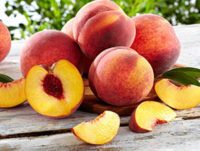 The advantage of Farmers Markets is that the fruits and vegetables are grown nearby so they can be picked at peak ripeness. And that’s when they are the most delicious and nutritious. Since peaches are in season now, I’m eating several each day. Peaches can be featured in desserts, salads, meat or other savory dishes. Here are some of my favorite peach recipes, to keep you excited about peaches!
The advantage of Farmers Markets is that the fruits and vegetables are grown nearby so they can be picked at peak ripeness. And that’s when they are the most delicious and nutritious. Since peaches are in season now, I’m eating several each day. Peaches can be featured in desserts, salads, meat or other savory dishes. Here are some of my favorite peach recipes, to keep you excited about peaches!
Summer Peach and Fresh Kale Salad with Toasted Almonds and a Balsamic Vinaigrette
Summertime Peach Crisp with Roasted Nuts, Dried Fruit & Ginger
Layered Fresh Peach & Cheesecake Parfait
Honey & Brown Sugar Roasted Peaches
Honey & Brown Sugar Roasted Peaches
Lisa Yockelson’s Honey and Brown Sugar-Roasted Peaches
Excerpted from Diet Simple by Katherine Tallmadge
6 Servings
The juice-ripe peaches are sweetened with a mixture of brown sugar and honey, enriched with a little melted butter, and mellowed with vanilla extract and peach nectar. Enjoy the peaches as is, or with a dollop of vanilla yogurt or ice cream.
Unsalted butter, for the baking dish
6 firm but ripe medium peaches, halved and pits removed
2 Tablespoons firmly packed light brown sugar
2 Tablespoons mild honey, such as clover
2 Tablespoons unsalted butter, melted
1 teaspoon vanilla extract
1/3 cup peach nectar (or 2 Tablespoons more, as necessary)*
Preheat the oven to 400 degrees F. Adjust the oven rack to the lower third level slot. Lightly butter the bottom of a 12 to 14-inch non-reactive ovenproof baking dish.
Place the peaches rounded-side down (cut side up) in the dish. Combine the sugar, honey, melted butter, vanilla, and peach nectar in a small mixing bowl. Spoon the mixture over and about the peaches.
Roast the fruit for 20 minutes, or until gently softened (but not mushy), and the juices have lightly condensed. Begin checking on the fruit at 15 minutes; if the peaches are not juice enough on their own, they may not give off enough juice, so you may need to add 2 tablespoons more peach nectar at this time. Roast an additional 5 minutes, as necessary. You can also glaze the fruit under a broiler for a few seconds until the tops glisten. Serve the fruit warm.
*If you cannot find peach nectar or peach juice, apricot nectar can be used.
The recipe for this essence-of-summer fruit dessert comes from Lisa Yockelson, baking journalist and author of the award-winning BAKING BY FLAVOR (New York: John Wiley & Sons, Inc., 2002).




